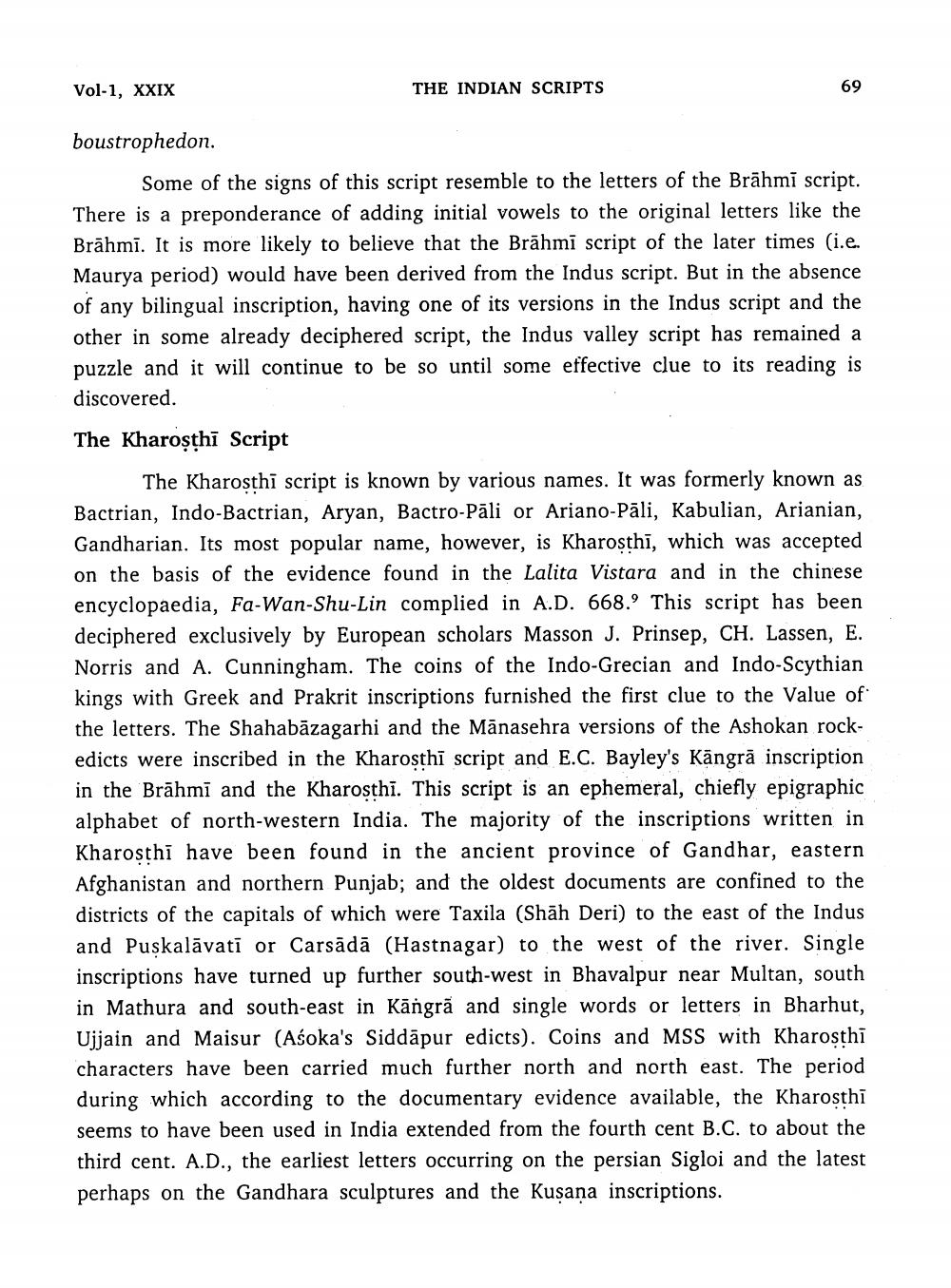________________
Vol-1, XXIX
THE INDIAN SCRIPTS
boustrophedon.
Some of the signs of this script resemble to the letters of the Brāhmi script. There is a preponderance of adding initial vowels to the original letters like the Brāhmi. It is more likely to believe that the Brāhmi script of the later times (i.e. Maurya period) would have been derived from the Indus script. But in the absence of any bilingual inscription, having one of its versions in the Indus script and the other in some already deciphered script, the Indus valley script has remained a puzzle and it will continue to be so until some effective clue to its reading is discovered.
The Kharoșthi Script
The Kharosthi script is known by various names. It was formerly known as Bactrian, Indo-Bactrian, Aryan, Bactro-Pāli or Ariano-Pāli, Kabulian, Arianian, Gandharian. Its most popular name, however, is Kharosthi, which was accepted on the basis of the evidence found in the Lalita Vistara and in the chinese encyclopaedia, Fa-Wan-Shu-Lin complied in A.D. 668.' This script has been deciphered exclusively by European scholars Masson J. Prinsep, CH. Lassen, E. Norris and A. Cunningham. The coins of the Indo-Grecian and Indo-Scythian kings with Greek and Prakrit inscriptions furnished the first clue to the Value of the letters. The Shahabāzagarhi and the Mānasehra versions of the Ashokan rockedicts were inscribed in the Kharosthi script and E.C. Bayley's Kängrā inscription in the Brāhmi and the Kharosthi. This script is an ephemeral, chiefly epigraphic alphabet of north-western India. The majority of the inscriptions written in Kharosthi have been found in the ancient province of Gandhar, eastern Afghanistan and northern Punjab; and the oldest documents are confined to the districts of the capitals of which were Taxila (Shāh Deri) to the east of the Indus and Puskalāvati or Carsādā (Hastnagar) to the west of the river. Single inscriptions have turned up further south-west in Bhavalpur near Multan, south in Mathura and south-east in Kāngrā and single words or letters in Bharhut, Ujjain and Maisur (Asoka's Siddāpur edicts). Coins and MSS with Kharosthi characters have been carried much further north and north east. The period during which according to the documentary evidence available, the Kharosthi seems to have been used in India extended from the fourth cent B.C. to about the third cent. A.D., the earliest letters occurring on the persian Sigloi and the latest perhaps on the Gandhara sculptures and the Kusana inscriptions.




